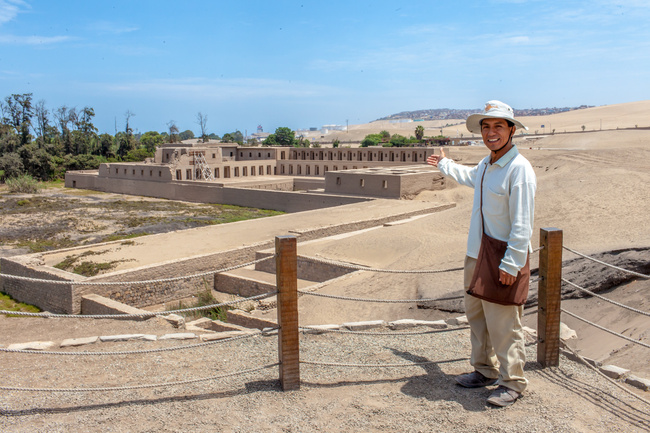
Pachacamac
The temple of Pachacamac is an archaeological site set 25 miles (40 km) southeast of Lima. It was the most important pilgrimage center in ancient Peru. Its central location brought the Moche, Nasca, Huari, Itchma, and Inca cultures down to the Lurin Valley where it meets the Pacific Ocean.
More about Pachacamac
This vast archaeological site begins with a well organized museum outlining the ruin’s complex history, where an English-speaking guide can show you ancient remains from the site and tomb. If you are lucky, a llama may be grazing at the entrance way. The site is so large that a vehicle is required to move between the areas.
“Pachacamac,” is a Quechua word for 'world' (pacha) and 'animate' (camac), and in total means “The one who animates the world.” The site has been the home and religious center of many cultures, starting with the Moche pilgrims, who migrated from the north, and the Nasca pilgrims, who arrived from the south around 200 B.C. These people used Pachacamac as their cultural center and home for over 400 years until the Huari arrived. The Huari constructed the majority of the city, probably using it as an administrative center. A number of Huari-influenced designs appear on the structures and on the ceramics and textiles found in the cemeteries of this period.
After the collapse of the Huari Empire, Pachacamac continued to grow as a religious center for the Itchma and Inca culture. The majority of the common architecture and temples were built during this stage to receive hundreds of pilgrims who venerated the same god. The Inca built five additional buildings, including a temple to the sun on the main square.
All cultures brought offerings to the holy ground to worship their gods. The ancient offerings found by archaeologists include detailed textiles, decorated ceramics, wood carvings, ocean shells, animals and even sacrificed women and children. Between 1940 and 1941, Julio C. Tello began excavations at the site, focusing on the temple of the sun, the Temple of Urpi, the Plaza, and the temple of Mamacona. He concluded that the Mamacona temple was a temple for women where only the most beautiful women were raised and given education inside the temple to become nuns or wives.
Moments to look forward to
Amazing Peaks and Majestic Ruins
PERU! is getting there. There are several areas where, for instance plastic bottles can be reused, by hotels providing large dispensers to refill existing bottles.
The Sacred Citadel of Pachacamac
We believe travel is more than ticking destinations off a list – it’s about discovering new places deeply, feeling connected wherever you go, and knowing you have a trusted team behind you every step of the way.



